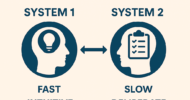In early October, the New York Times published two articles that addressed a pervasive problem from slightly different perspectives. Boiled down to its essence, the problem is the unintended consequences of some provisions of the new healthcare reform legislation.
In his well crafted article, entitled “Health Care’s Uneven Road to a New Era,” David Leonhardt explored the impact caused by the introduction of new regulations into a “status quo” system.
So-called “mini-med” health plans — i.e., low-cost, low-benefit arrangements that provide minimal coverage — are offered by some companies to provide at least some type of health insurance for their employees. Mr. Leonhardt used McDonald’s as an example.
Currently, McDonald’s employees, most of them part-time and earning less than $20,000 a year, can sign up for a mini-med plan for as little as $730 a year. So, what’s the catch?
The coverage under this plan is capped at $2,000 a year.
Just think about it for a minute … what would not be covered by $2,000 in our overpriced healthcare system? The cost of a single diagnostic test (e.g., MRI), a single visit to the emergency room, or even adequate care for a common chronic condition such as asthma or diabetes would well exceed this cap.
This isn’t just McDonald’s’ problem — when the $2,000 cap is reached, it becomes everyone’s problem!
That’s because, for all intents and purposes, the person “covered” by the mini-med plan becomes “uninsured” by virtue of exhausting the benefit allowance.
When he or she ends up in the ER or needs treatment for cancer, the cascade of problems begins. The patient may end up delaying treatment or skipping some of it entirely because of lack of funds. The hospital and other providers either don’t get paid or recover only part of the cost of treatment. Inevitably, insurance premiums rise for everyone to help make up the difference.
By virtue of the low benefits they provide based on the premiums charged, it turns out that many mini-med plans might violate a provision of the new healthcare reform law that requires health plans to spend at least 85% of their revenue on medical care.
This brings me to the second article in the Times, “Waivers Aim at Talk of Dropping Health Coverage” by Reed Abelson. Balking at new regulations, he writes, some health insurers — particularly small companies and those offering limited benefit policies — have threatened to withdraw from the market or eliminate certain products.
Typically, more than a million people are covered by limited-benefit policies.
When the law takes full effect in 2014, insurance exchanges will be established to fill the potential gap in affordable health insurance. In the meantime, what should we do for the next three years to deal with this unintended consequence?
The administration’s initial response has been to issue waivers. To date, waivers have been granted to 30 or more insurers, employers, and union plans in an effort to assure a smooth transition.
Of course, opponents of healthcare reform have begun to cite the waivers as evidence of failure.
So, what can we learn from all this?
First, although mini-med plans are better than nothing, they are certainly not what policymakers intended when they passed healthcare reform. We need to consider moving up the timetable to get health exchanges up and running — 2014 may be too late!
Second, we must recognize that healthcare reform fails to address the real issue — cost control.
Finally, I see our healthcare system as a huge balloon — when you push it in one spot, it pops out in another spot. The key is to recognize that everything is intertwined.
Expanding on the wisdom of the poet, John Donne, “No man — and no part of the system — is an island.”
David B. Nash is Founding Dean of the Jefferson School of Population Health at Thomas Jefferson University and blogs at Nash on Health Policy.
Originally published in MedPage Today. Visit MedPageToday.com for more health policy news.

























![Registered dietitians on your care team [PODCAST]](https://kevinmd.com/wp-content/uploads/Design-4-190x100.jpg)



